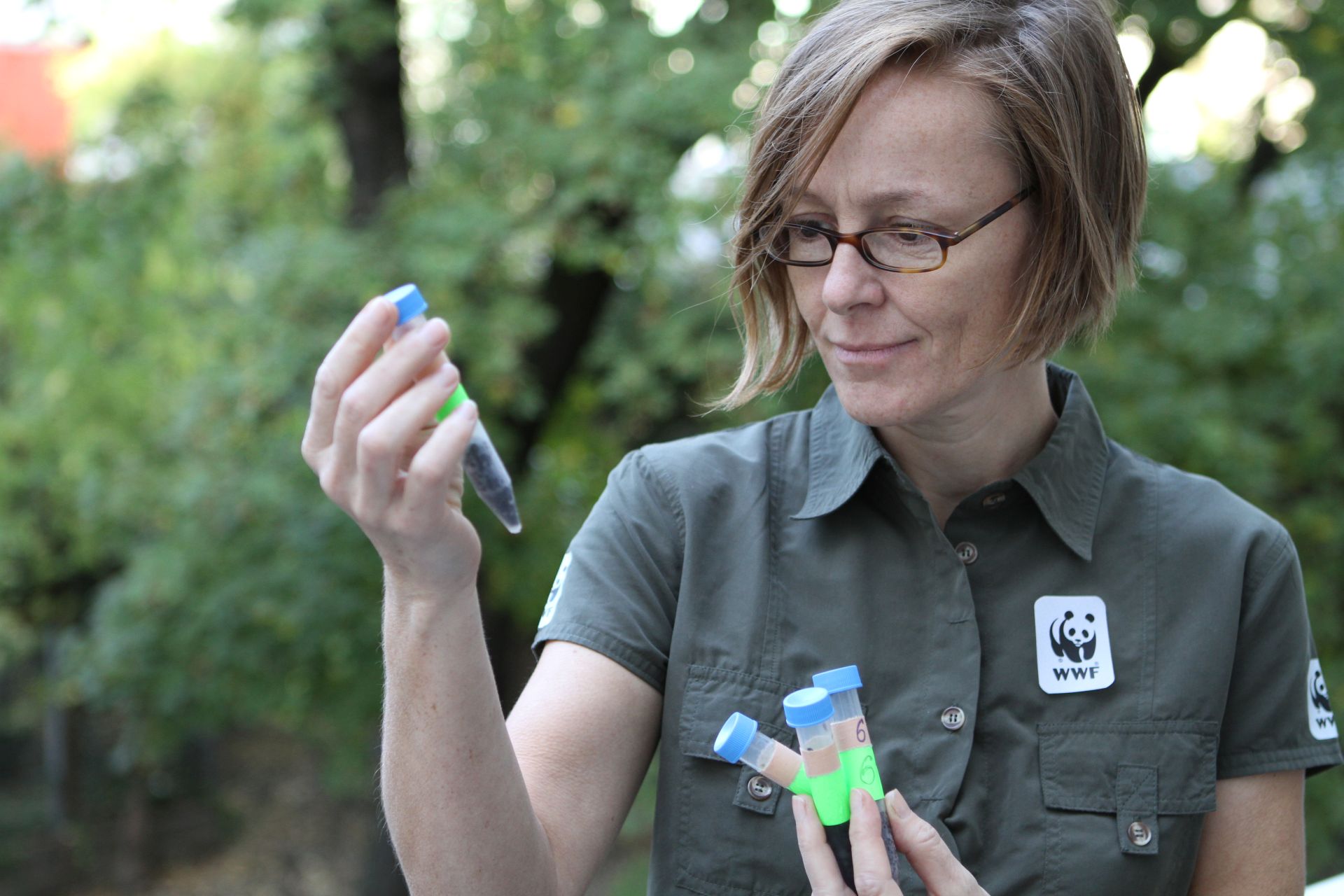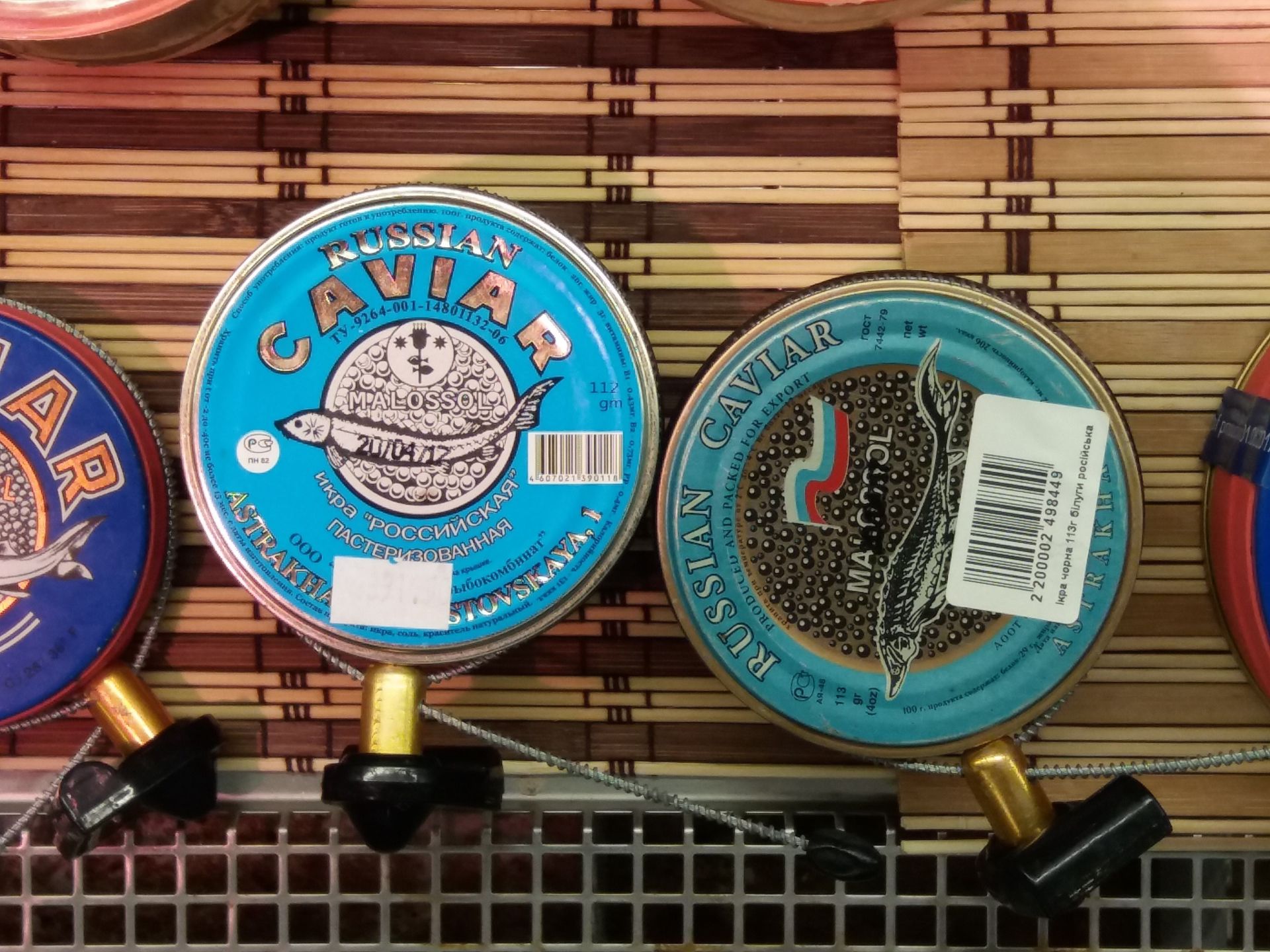
Caviar has never gone out of style, but these days, it’s particularly in demand. In the last year or so, the upmarket delicacy has begun to make regular appearances in over-the-top stunt foods, such as garnishing fried fish sandwiches, and highbrow-lowbrow trendy pairings like caviar-topped Pringles. Market research suggests that U.S. sales are expected to surpass $400 million this year, up from $100 million in 2022.
This swelling demand may be good news for Pringles, but it’s bad news to Jutta Jahrl, a conservationist and project manager at the World Wildlife Foundation(WWF) who studies sturgeons. Without sturgeons, there is no caviar. Though humans eat roe, or clumps of eggs, taken from the ovaries of many fish species, only salt-cured sturgeon eggs can be called caviar. But caviar consumers have good reason to be wary of what’s really in that tin.
In a new study led by Jahrl and an evolutionary genetics team at the Leibniz Institute for Zoo and Wildlife Research in Germany, they found that 29% of commercially sold caviar tested across four European countries had been procured or sold in violation of codes protecting endangered species. Ten percent of the caviar they tested wasn’t even fish eggs, and was instead a mix of unidentifiable DNA, suspected sturgeon offal, and artificial products.. “It was even worse than we thought,” Jahrl says.
Isotope analysis of fish eggs
Illegal or counterfeit caviar is far from a new problem, though Jahrl’s study, published Nov. 20 in the journal Current Biology, marks the first academic attempt to track it using a forensic technique known as isotope analysis. Combined with standard genetic testing, this allowed the team to extract enough data from samples to determine information like the geographical area where the eggs originated or the diet of the fish they came from, rather than simply whether or not it came from sturgeon.
This level of detail is critical to assessing the legality of sturgeon products, since it is illegal to harvest eggs from sturgeon caught in the wild. International caviar trade has been governed by the Convention on International Trade in Endangered Species (CITES) since 1998, when an agreement now signed by 181 countries was drafted to put an end to the unsustainable wild sturgeon fishing industry. Under CITES, caviar now can only be legitimately produced by farming operations, an attempt to protect the remnants of a now-decimated wild sturgeon population. In the Caspian and Black Seas, where four of the most desired and endangered sturgeon species still roam—including the Beluga sturgeon, whose eggs are considered a preeminent delicacy—sturgeon fishing is entirely prohibited. The U.S. has prohibited the import of caviar from this region since 2005. Today, the only legal way to acquire beluga caviar in the U.S. is to buy it for $830 an ounce from a solitary farm in Florida.
Read More: Your High Quality Caviar Might Just Be Made in China
The remaining illegal caviar trade is centered in that European region, explains Jahrl, particularly along the Danube river, where fertile female sturgeon loaded with eggs travel upstream to spawn. Her study included nearly 150 samples of caviar and sturgeon meat found in restaurants, bars, and stores across Bulgaria, Romania, Serbia, and Ukraine. The most disturbing finding, Jahrl says, was that there was really no rhyme or reason to where illegal caviar popped up. “We found it in all four countries that we tested. And it's still quite widespread. We find it in restaurants. We find it in hotel bars, we find it in all kinds of retailers.”

Fake caviar made from sturgeon farming waste or other fish products shaped into orbs could pose real health concerns to consumers, Jahrl says. And even aside from outright illegal caviar, her team also found plenty of mislabeled sturgeon roe and meat, including tins with incorrectly marked regions of origin and labels applied in ways that didn’t seal the package, both violations of CITES regulation.
Because Jahrl’s data comes on the heels of decades of poorly hidden (but rarely measured) illegal fishing, the pressures that create an extensive caviar black market are well known, even if its extent is surprising. The demand for caviar seems impervious to economic fluctuations, and the product “is just so precious that it’s really worth trying illegal things,” she says. “Wherever there are sturgeons, people are tempted to use these resources illegally.” Jahrl hopes to receive the WWF’s support to do similar market analyses in other parts of Europe and in the U.S.
Hope for better enforcement
The biggest hope for cleaning up the caviar world is better enforcement of CITES rules, say experts, including through law enforcement investigations like a 2015 Missouri Department of Conservation operation that shut down a flourishing black market passing off local paddlefish eggs as caviar.
For these reasons and more, researchers and food media have also questioned the overall ethics of even above-board caviar production, where the high profit margins of sturgeon aquaculture can take precedence over animal welfare. One response to the ongoing confusion about the origins of commercial caviar has been the rise of “no-kill” or “humane” producers, a framework that’s especially popular in the U.S., Jahrl says, calling it one of the industry’s “new tricks” to boost sales. Though this process, which relies on inducing labor in pregnant sturgeon and massaging out their eggs, isn’t directly lethal, it’s also not a perfect solution. Studies have put the survival rate of females used for multiple years of no-kill harvesting at around 65%, and critics claim the process results in lower-tier quality and flavor.
For those looking to load up their Pringles, the results of Jarhl’s study also unfortunately mean that there’s currently no great way to ensure a product you’re buying is legal caviar. Experts have long said that the best tactic is to learn more about the CITES labeling requirements and how to interpret them, but they’re not always as straightforward as other food labels. In the absence of clearer guidelines and enforcement to help consumers better understand what they’re buying, the other safest ways to shop include taking precautions like seeking out local farms that reference CITES—a 2018 census counted 18 sturgeon farms across the U.S. And above all else, culinary experts say, there’s one ironclad roe rule when dining out at restaurants: If they won’t show you the tin, don’t order the caviar.
More Must-Reads from TIME
- Cybersecurity Experts Are Sounding the Alarm on DOGE
- Meet the 2025 Women of the Year
- The Harsh Truth About Disability Inclusion
- Why Do More Young Adults Have Cancer?
- Colman Domingo Leads With Radical Love
- How to Get Better at Doing Things Alone
- Michelle Zauner Stares Down the Darkness
Contact us at letters@time.com